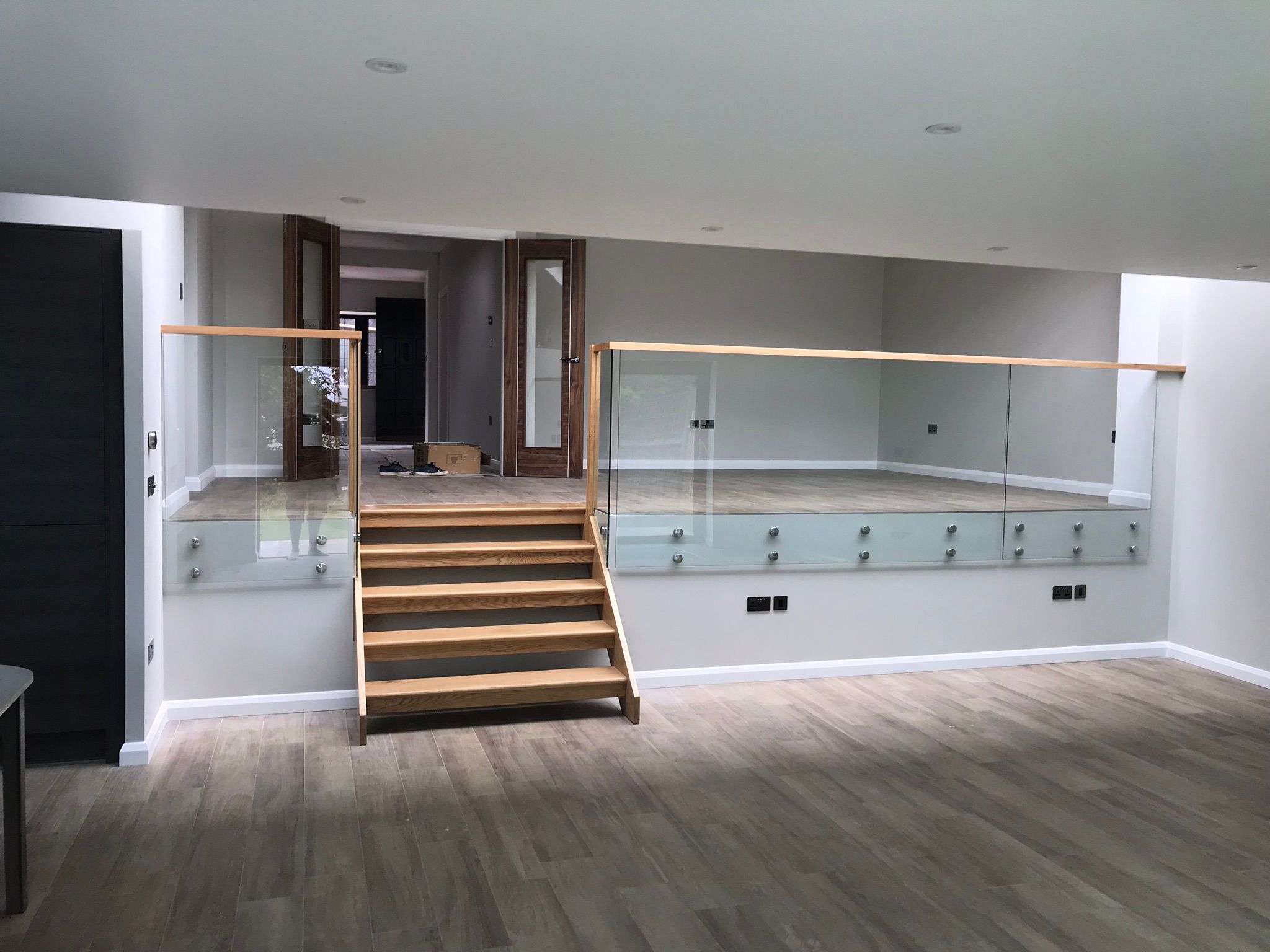
Offering your staircase a rework can deliver a beautiful centrepiece and refresh your interior. Combining usefulness with style, stairs are a major feature of your home’s styling.
Upgrading your stairs for safety reasons can also be a design upgrade for your home’s first impression.
Reviewing Your Staircase Before Starting Work
Before any makeover begins, think about how your staircase fits with your home's overall style. Always consult local planning authorities if your home is listed to avoid causing legal issues. Properties without listed status still need to have the stairs examined before work begins. Be clear about what you’d like to achieve—can your existing stairs manage the level of renovation you have in mind?
Take time to consider your renovation goals and whether your current stairs can handle them.
Question whether your staircase is suitable for the changes you’re planning.
Be clear on what you want to do and whether your stairway are able to support the work.
Does your staircase have the structure needed to withstand what you're planning?
Before going ahead, consider whether your stairs can handle the level of change.
Have a clear idea in mind and check if your staircase can cope with your plans.
Plan your renovation with your staircase’s overall soundness in mind.
Will your existing staircase be suitable for the design changes you’re considering?
Think through your design plans—can your current stairs realistically take the upgrade?
Period properties with wooden staircases can often be refreshed with DIY efforts, such as swapping out steps or fitting a stylish balustrade.
Heritage properties with wooden staircases can often be refreshed through DIY projects like new treads or handrails.
You can give timber stairs in older properties a fresh look by replacing treads or adding a handrail.
Simple DIY upgrades like changing the steps or fitting a new handrail can transform period staircases.
Wooden stairs in older homes often look better after basic improvements like renewing the treads or banister changes.
Many traditional stairways can be improved with DIY projects, especially by updating the treads or balustrades.
Wooden staircases in heritage properties often benefit from basic improvements like modern or classic balustrade additions.
Swapping out old treads or adding a new balustrade can help refresh a traditional stairway.
If you have a timber stairway in a period property, some DIY work may be all it takes to give it a fresh look.
Basic updates like changing the steps or fitting a balustrade can update or refresh a wooden staircase in a period property. For a complete overhaul, it’s advisable to get professional advice early on, weighing up the costs and benefits of removing and rebuilding versus restoring the existing staircase.
If you're planning a major update, speak to a professional early to understand the difference between starting fresh and renovation.
Large-scale renovations to your staircase should involve expert advice to consider budget and results.
When considering a total makeover, a specialist can help you decide whether to start fresh or renovate.
Before going ahead with a complete overhaul, get a pro's opinion on whether to tear down and replace or improve what's there.
A complete staircase overhaul should involve expert input to balance the pros and cons of each route.
Talking to a staircase professional early can help you choose between a complete replacement or modernising what you have.
If a complete revamp is on click here the table, review the budget and results with help from a qualified advisor.
For big renovations, it’s sensible to get advice from someone experienced in both renovation and reconstruction.
Plan carefully for a full staircase renovation by consulting a specialist and considering both routes.
The Key Rules for Staircase Renovation
Before you start, find out what rules may apply to your project. If your home was built before current regulations, exact replacements usually don’t need to meet new rules.
However, if altering the overall layout of the staircase, you must stick to Part K of the Building Regulations, which covers:
If you’re modifying the shape of your stairs, you’ll need to comply with Part K of the Building Regulations.
Making major modifications to your staircase design means you must adhere to Part K of the building rules.
Modifying the staircase’s layout or shape requires you to meet the standards set in Part K of the regulations.
If your renovation includes design modifications, you’re legally required to follow Part K building rules.
Redesigning the design or arrangement of your staircase means it must comply with the rules in Part K.
Part K of the Building Regulations applies when you make any structural updates to your staircase layout.
Changing the entire layout of your stairs will mean meeting strict rules under Part K.
Substantial modifications to your staircase will need to meet the building rules set out in Part K.
You must adhere to Part K standards if you’re changing how your staircase is laid out.
If your project involves altering the core design of your stairs, Part K regulations will be enforced.
- Every stair step needs to be no less than 220mm in depth when measured from front to back.
- Every stair step rise must not exceed 220mm in height.
- You’ll need flat treads and nosings no deeper than 25mm to follow Part K rules.
- A compliant staircase needs 2m of clearance, with a slight reduction to 1.8 metres allowed for roof spaces.
- Open risers must include overlapping steps and prevent objects larger than ten centimetres from passing through.
As construction rules differ across the UK, it's best to check with a local expert before any renovation begins.
Updating an Existing Staircase
Frequent faults include unstable railings and creaking treads. If the balustrade is shaky, it might need glue, fixings, or an extra stringer. Fixing a creaky staircase is possible if the joints or materials aren’t too far gone; otherwise, replacement is likely. You can reduce the size of oversized newel posts on traditional stairs to gain extra clearance, as long as the framework remains sound.
Simple Ways to Modernise Your Staircase
Even basic updates—like a fresh coat of paint or replacing a few steps—can make your stairs look refreshed. If your stairs are covered in carpet, removing the covering may reveal timber steps that can be restored and reused.
Always test for lead before sanding, and follow protective advice if it’s present. Assess the state of the original treads before starting repairs or replacement. Repairing trim and treating exposed timber can give your stairs a refreshed feel.
Deciding Whether to Repair or Replace Your Stairs
If your staircase is severely worn, replacing it may be more logical than continuing with repairs. Like-for-like stair replacements is straightforward—making major modifications isn’t. Staircases play a crucial part in your home’s structure, so consult a qualified expert before making any changes.
Blending Stair Layout with Home Function
From freestanding and cantilevered to cantilevered and freestanding, there are many design options. If your household includes children or older individuals, choose a stair design that prioritises safety. To get the best result, it’s best to have your staircase professionally assessed. A staircase redesign can influence the rest of your layout—speak with a professional for the best results.
Expected Costs for Upgrading Your Stairs
Shop around and ask for clear breakdowns so you know exactly what you’re getting. DIY can be cheaper upfront, but you’ll need to budget for equipment, supplies, and rubbish removal.
Creative Balustrade Options to Upgrade Your Stairs
Stair width matters—under 1 metre needs one rail, but over that means you’ll need a rail both sides. Metal, glass, and wood are the top materials used for modern stair designs.
Stylish and durable, toughened glass that improves brightness, but installation costs change with the type of fittings used (clamp fittings versus seamless options).
Matching Your Staircase to the Look of Your Home
Your stairs can either tie into your interior style or act as a centrepiece—consider which suits you best. Use black powder-coated finishes with metal frames for contrast, or light oak wood for a more organic feel in grey spaces.
Matching your stair rails to other wooden elements can create flow, and refined spindle finishes complete the design.
Design-Focused Ways to Use Stair Underspace
- Add a Cloakroom – Get professional plumbing advice to install a space-saving loo, increasing functionality and property value.
- Built-in drawers and hangers make excellent use of the unused stair space.
- Show off your wine collection in a well-lit shelving unit under the stairs.
- Create an Under-Stair Workspace – Install a tailored workspace setup, with sliding doors for concealment.
Transform the space into a hidden home office with smart shelving and desk integration.
Use the area for a compact office setup—add shelving and sliding doors to keep it neat.
A small desk and shelving unit under the stairs makes a great tucked-away workspace.
Fit a tailor-made workstation under the stairs, complete with panel doors to hide the space.
Create a discreet work zone by installing a desk and storage behind sliding panels.
Add a custom workspace with storage to make a practical workspace in unused space.
Design a smart workstation with bespoke joinery and add a closing panel system.
A fitted desk and storage area under the stairs is perfect for getting things done in a small space.
Use custom-built furniture to build an office nook under the stairs with concealed access.
Turn wasted stair room into a home office with a concealed working area. - Make the stairs part of your kitchen layout—great for fitting in extra shelving or white goods.
The Best Ways to Light Your Stairs
Bright, well-placed lights help avoid trips while bringing a polished look. Let’s look at some ideas:
- Integrated lighting within the stairs is subtle and highlights each tread for a distinctive stair look.
- Low-mounted wall lighting adds both safety and ambience to your stairs.
- Lighting from above ensures the entire staircase is well-lit and safe.
Stick with soft, glare-free lights that align with the stair design.
Summing Up:
A well-structured plan can help you transform your stairs into a highlight within your home that adds real value to your home. The key to a successful staircase project is choosing what fits your home best—one that balances style and practicality.
 Hallie Eisenberg Then & Now!
Hallie Eisenberg Then & Now! Robert Downey Jr. Then & Now!
Robert Downey Jr. Then & Now! Val Kilmer Then & Now!
Val Kilmer Then & Now! Michael Fishman Then & Now!
Michael Fishman Then & Now! Catherine Bach Then & Now!
Catherine Bach Then & Now!